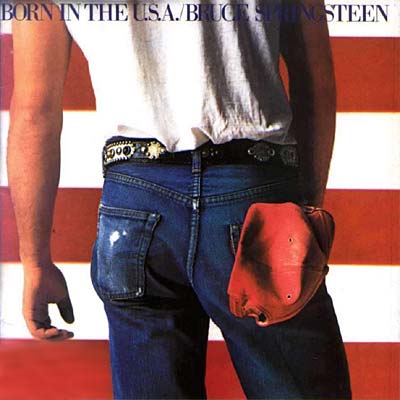
Born in the U.S.A. (1984)

1. Born in the U.S.A.
2. Cover Me
3. Darlington County
4. Working on the Highway
5. Downbound Train
6. Fire
7. No Surrender
8. Bobby Jean
9. I'm Goin' Down
10.Glory Days
11.Dancing in the Dark
12.My Hometown
Few albums in the modern rock canon have walked the line between commercial triumph and critical misinterpretation as deftly—or as loudly—as Born in the U.S.A. Released in the summer of 1984, it transformed Bruce Springsteen from a revered American songwriter into a global cultural icon. The album's reach was astonishing: seven Top Ten singles, international chart dominance, and a level of media saturation that bordered on overexposure. Yet beneath its glossy production and radio-friendly hooks lies a collection of songs as trenchant and morally complex as anything in Springsteen’s oeuvre.
The shift in tone was striking. Gone were the dimly lit bedrooms and hushed acoustics of Nebraska. In their place: synths, snares, and a voice pushed forward in the mix, singing not just for characters in small-town America, but seemingly on their behalf. But to regard Born in the U.S.A. as a simple commercial pivot would be to miss the album’s subtle core. These are songs not of triumph, but of reckoning.
Where earlier albums chronicled the twilight of adolescence, Born in the U.S.A. presents a cast of adults—factory workers, veterans, fathers, and dreamers—brought face to face with the realities of life in Reagan-era America. Springsteen’s characters are no longer asking how to escape. They are wondering what to do once the escape has failed. My Hometown, Downbound Train, and No Surrender are as much about memory and loss as they are about resilience. Even Glory Days, often mistaken for nostalgia, is laced with ironic resignation.
The title track became its own cultural battleground. Misread by many—including political leaders—as an unambiguous anthem, it is in fact a protest song of remarkable depth. The pounding drums and defiant vocal delivery serve as a bitter counterpoint to the lyrics, which trace the disillusionment of a Vietnam veteran returned to a country that has little use for him. It was this contradiction—anthemic sound paired with despairing message—that lent the track its power, and also its widespread misinterpretation.
The E Street Band, newly armed with digital flourishes and stadium-sized arrangements, adapt with verve. The production, while rooted in 1980s gloss, never overwhelms the songwriting. Tracks such as Dancing in the Dark and Cover Me are slick, but not shallow; I'm on Fire is minimalist and haunting. And for all its accessibility, the album never panders. Even the so-called “lesser” songs—Working on the Highway, Bobby Jean—are rich with energy and pathos.
If there is any criticism to be made, it is that the album's ubiquity dulled its edge. By the end of 1985, nearly every track had either been released as a single or spun endlessly on FM radio. For some listeners, fatigue set in. But time has been kind to Born in the U.S.A. Its songs have outlived their promotional cycle, and today the album stands not merely as a commercial milestone, but as a nuanced exploration of post-industrial America—delivered with clarity, conviction, and immense craft.
It is easy to forget, amidst its red-white-and-blue imagery and chart-topping dominance, that Born in the U.S.A. is, at heart, a deeply empathetic album. Its heroes are not idealized—they are ordinary, bruised, and often bewildered. But Springsteen, as always, lends them dignity. And in doing so, he crafted one of the most enduring documents of American life ever set to vinyl.
Go back to the main page
Go To Next Review